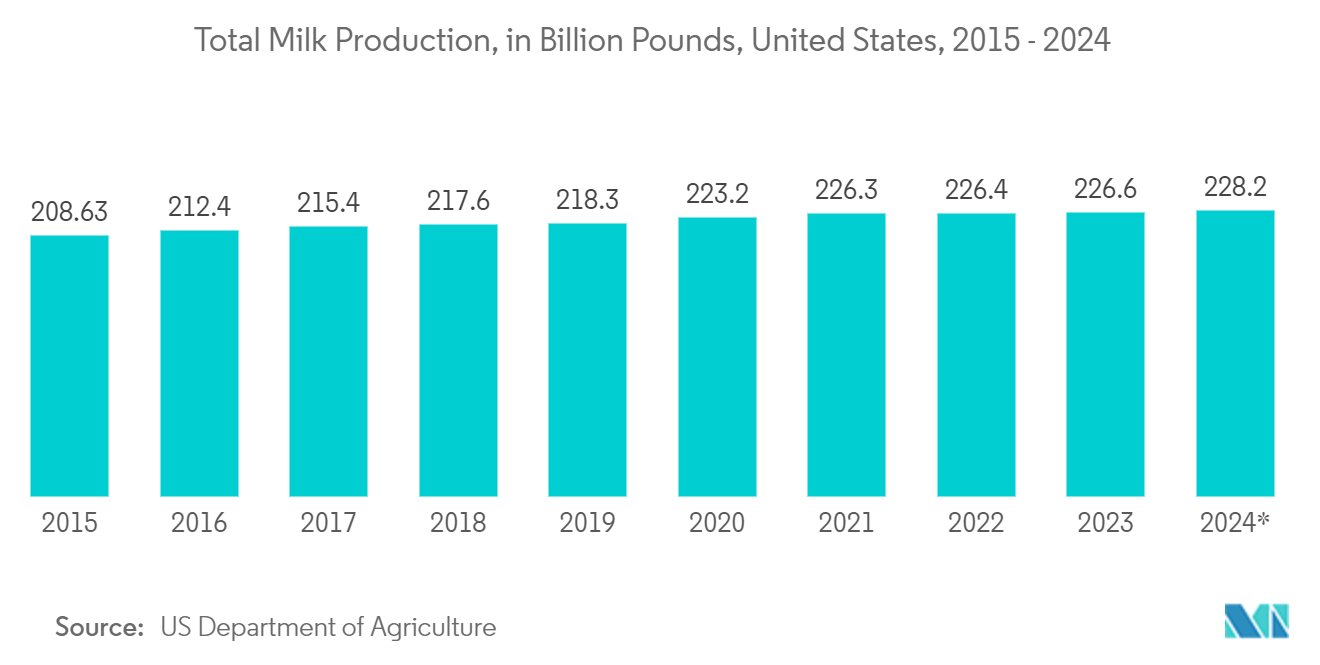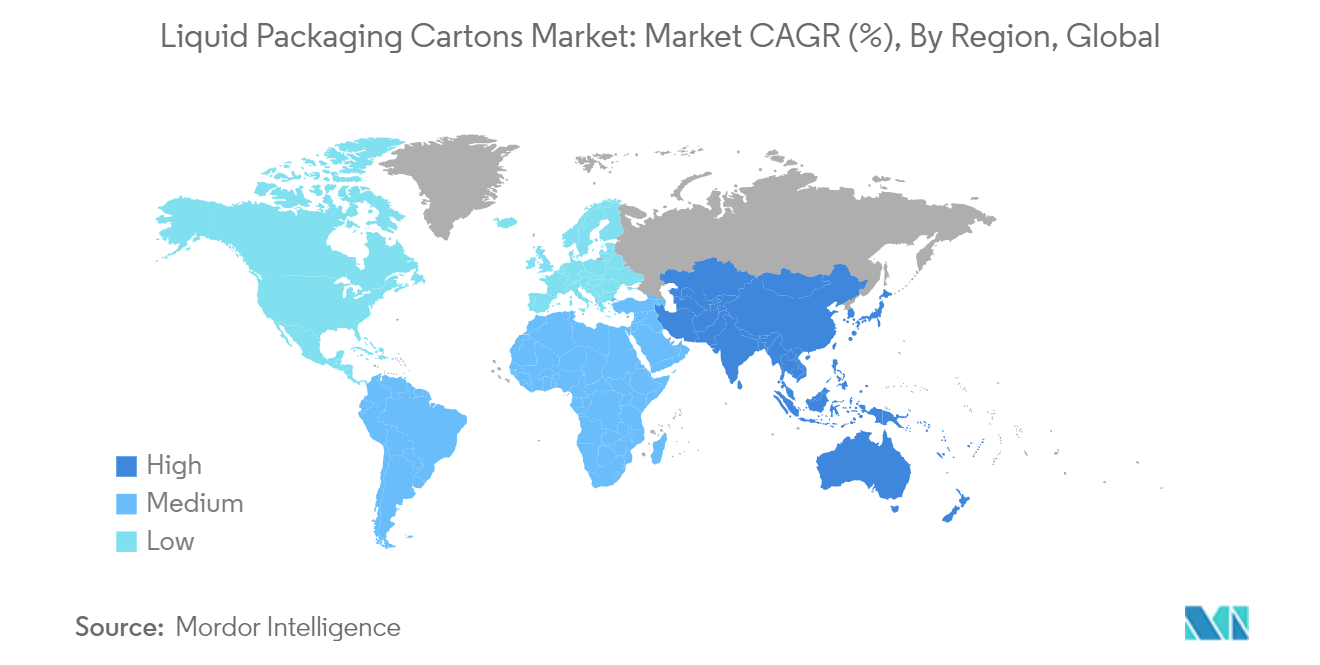Market Trends of Liquid Packaging Cartons Industry
Milk Liquid Type Segment Holds Significant Market Share
- The milk carton packaging market is experiencing robust growth, fueled by rising milk consumption, including pasteurized and flavored varieties. This uptick is attributed to a burgeoning affluent consumer base and an escalating demand for convenient, health-conscious choices, a response to today's fast-paced lifestyles. A heightened awareness of milk's health benefits further spurred its demand. Countries like India, the United States, and China are witnessing a notable uptick in the consumption of diverse milk types, from pasteurized and UHT to flavored, recombined, and lactose-free variants.
- Data from the US Department of Agriculture indicates a slight uptick in US milk production, projecting 228.2 billion pounds in 2024, up from 226.6 billion pounds in 2023. The USDA Foreign Agricultural Service reports that India led global fluid cow milk consumption in 2023, tallying 87,455 thousand metric tons.
- As milk production and consumption continue to rise, there is a potential for innovation in carton packaging. Such advancements could cater to the unique demands of dairy producers and consumers, encompassing enhanced barrier technologies for extended shelf life, user-friendly features for convenience, and eco-friendly initiatives to mitigate environmental impact.
- Packaging manufacturers, including those producing milk cartons, are increasingly adopting digitally connected packaging. This shift will boost sales, enhance consumer engagement, and deepen their understanding of consumers.
- For instance, Tetra Pak International SA emphasizes that its Tetra Pak Connected Package facilitates businesses' digital transformation. Creating and managing unique digital identities for every packaged product enables businesses to leverage consumer engagement solutions akin to practices long adopted by various industries: establishing direct connections with consumers for deeper insights.

Asia-Pacific Expected to Witness Significant Growth in the Market
- Over the past two decades, China has witnessed remarkable growth in liquid packaging, driven by sustainability concerns, technological innovations, and appealing economic factors. As consumer perceptions and interactions with packaging evolve, vendors in China are pivoting toward sustainability.
- This shift has led to a move from traditional rigid packaging solutions to innovative and eco-friendly paperboard carton packaging. The rising demand for user-friendly packaging and enhanced product protection highlights the growing prominence of liquid packaging as a viable and cost-effective alternative.
- Liquid packaging cartons provide content safety and protection from contaminants, prolonging the product's shelf life. Edible liquids (milk, juice, tomato sauce), soft drinks, water, etc., are packaged in liquid packing cartons. The shelf life of milk cartons is longer, and the risk of contamination is lower. Due to the ease of re-closing the cartons after use, the consumption of liquid packing containers is expected to grow faster than in the last decade.
- Japan's liquid packaging cartons are the go-to for items like milk juices. These cartons extend product shelf life and ensure freshness. The rising demand for eco-friendly packaging has spurred innovations, resulting in cartons made from recyclable and biodegradable materials.
- As the Japanese market witnesses a growing preference for packaged and ready-to-drink beverages, this segment's expansion highlights a broader trend toward convenient and portable packaging solutions.
- In India, the demand for liquid cartons is on the rise, fueled by critical factors such as the consumption of milk, fruit juices, and various other beverages, and so does the demand for liquid cartons.


